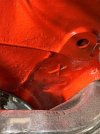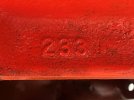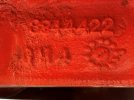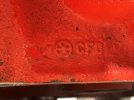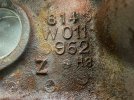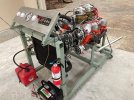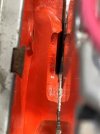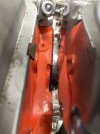57Chevy_409
Member
Hi Folks. I've been struggling with this for awhile now, but so far here is my interpretation of what my 409 engine is:
1. 1964 since casting is 3844422 and has “x” On Block.
2. CFD casting indicates that it came from the Central Foundry Division.
3. By the Julian Date Code "233" (leap year) it was manufactured August 20, 1964.
Did I get this correct so far? Is there any other information that I can extract from the numbers. Thanks!
1. 1964 since casting is 3844422 and has “x” On Block.
2. CFD casting indicates that it came from the Central Foundry Division.
3. By the Julian Date Code "233" (leap year) it was manufactured August 20, 1964.
Did I get this correct so far? Is there any other information that I can extract from the numbers. Thanks!

